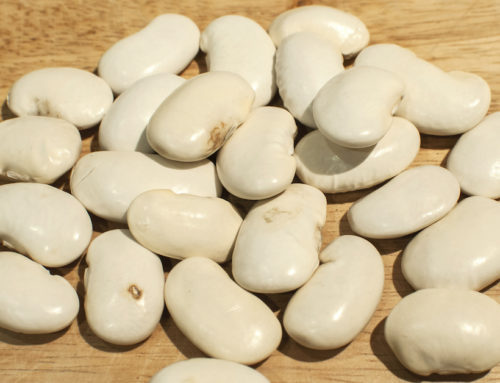Many people take iron supplements to defend against iron-deficiency anemia, a condition where the body doesn’t produce enough red blood cells.
This kind of anemia is caused by factors like poor diet, frequent blood donation, endurance training, some digestive conditions and menstruation.1
Iron is necessary for metabolic and energy functions in the brain. But it must be kept in balance, because both iron overload and iron deficiency damage the brain and can trigger neurodegenerative diseases, including dementia and Alzheimer’s disease.2 Excessive iron also figures in heart disease.
Read on to discover how iron affects you, and what you can do to ensure you’re getting the right amount.
Iron is essential to mitochondrial function as well as neurotransmitter synthesis, protein synthesis and other biochemical activities. It’s important that your brain has adequate levels of iron so it can perform all these functions as necessary.
But that doesn’t necessarily mean more is better. Too little and too much are both risk factors for neurodegenerative conditions.
The Effects of Iron Deficiency on Cognitive Functioning
The common symptoms of iron-deficiency anemia include fatigue, headaches, irregular heartbeat and chest pains.
Unlike these obvious symptoms, the effects of iron deficiency on the brain take place behind the scenes. Some symptoms of adverse brain function caused by iron deficiency are short attention span and disruption of sensory perception, as well as emotional and behavioral changes.3
In older people, anemia and iron deficiency are considered risk factors for dementia.
A study published in the journal Neurology followed 2,552 adults (average age 76) for 11 years. They were free of dementia at the time the study began.
The researchers used the World Health Organization (WHO) criteria for anemia and determined the presence of dementia using medication and hospital records, and the Modified Mini-Mental State (3MS) assessment.
The study found that the participants who had anemia at the start of the study were at greater risk of developing dementia (a 23% risk vs. 17% for people without anemia).
According to the study, the “association remained significant after adjusting for demographics, APOE ε4 [the ‘Alzheimer’s gene’], baseline 3MS score, co-morbidities, and renal function.”4
When neurons can’t function properly because of an iron deficiency, they begin to die off, causing cognitive decline and dementia.
Too Much Iron in the Brain
On the other end of the spectrum is what happens to cognition when too much iron accumulates in the brain. Too much iron is the more common condition, especially among men and post-menopausal women. Older people are at greatest risk for excessive iron.
Too much iron contributes to oxidative stress and mitochondrial decay, conditions which also destroy neurons and clear a path for tau tangles and beta-amyloid plaques to accumulate.5
In people who aren’t anemic, iron tends to accumulate in cells and tissues as we age.
The process of cell aging is called senescence. In a study published in the journal Antioxidants & Redox Signaling, an in vitro experiment found “total iron content increased exponentially during cellular senescence, resulting in 10-fold higher levels of iron compared with young cells.”6
Women who menstruate regularly until menopause may be at less risk of toxic iron levels because they lose iron with each cycle. This may help to prevent early-onset dementia, but it doesn’t guarantee iron levels are balanced.
Another study found that, compared with control subjects, patients with Alzheimer’s disease had significantly more iron accumulation in the basal ganglia, a group of structures in the base of the brain involved in coordination of movement.7
What You Can Do to Strike an Iron Balance
Iron levels are measured by the amount of hemoglobin in red blood cells, the protein that carries oxygen from the lungs to the body’s tissues and returns carbon dioxide from the tissues back to the lungs.
According to the Mayo Clinic, the normal hemoglobin range is generally defined as 13.5 to 17.5 grams (g) of hemoglobin per deciliter (dL) of blood for men and 12 to 15.5 g/dL for women.8
The only way to know your iron levels is to have your blood tested. Your doctor can do it, or the American Red Cross measures your iron levels every time you donate.
If your iron levels are too low, I suggest first increasing your dietary sources before rushing to a supplement. Foods that are rich in iron include:
- Red meat, pork and poultry
- Seafood
- Beans
- Dark green leafy vegetables
- Dried fruit
- Peas9
If you have too much iron, the first step is to limit your intake of these foods. Eating foods rich in phytonutrients, flavonoids and polyphenols like quercetin, curcumin, lipolic acid, green tea and milk thistle can all chelate, or absorb, iron in tissue so it’s flushed out of your body.
You can also increase your intake of foods rich in antioxidants, which will help fight off oxidative damage and restore your neurons to better health.
Balancing the amount of iron doesn’t have to be hard, so long as you’re aware of your levels and adjust your diet as necessary.
- Anemia: Causes, symptoms and treatment.
- Iron neurochemistry in Alzheimer’s disease and Parkinson’s disease: Targets for therapeutics.
- Iron deficiency and cognitive functions.
- Anemia and risk of dementia in older adults.
- Body iron is a contributor to oxidative damage of DNA.
- Iron accumulation during cellular senescence in human fibroblasts in vitro.
- In vivo evaluation of brain iron in Alzheimer disease using magnetic resonance imaging.
- Iron deficiency anemia.
- Iron deficiency anemia.







